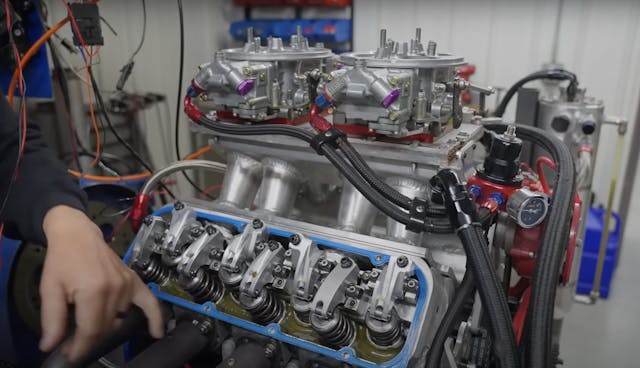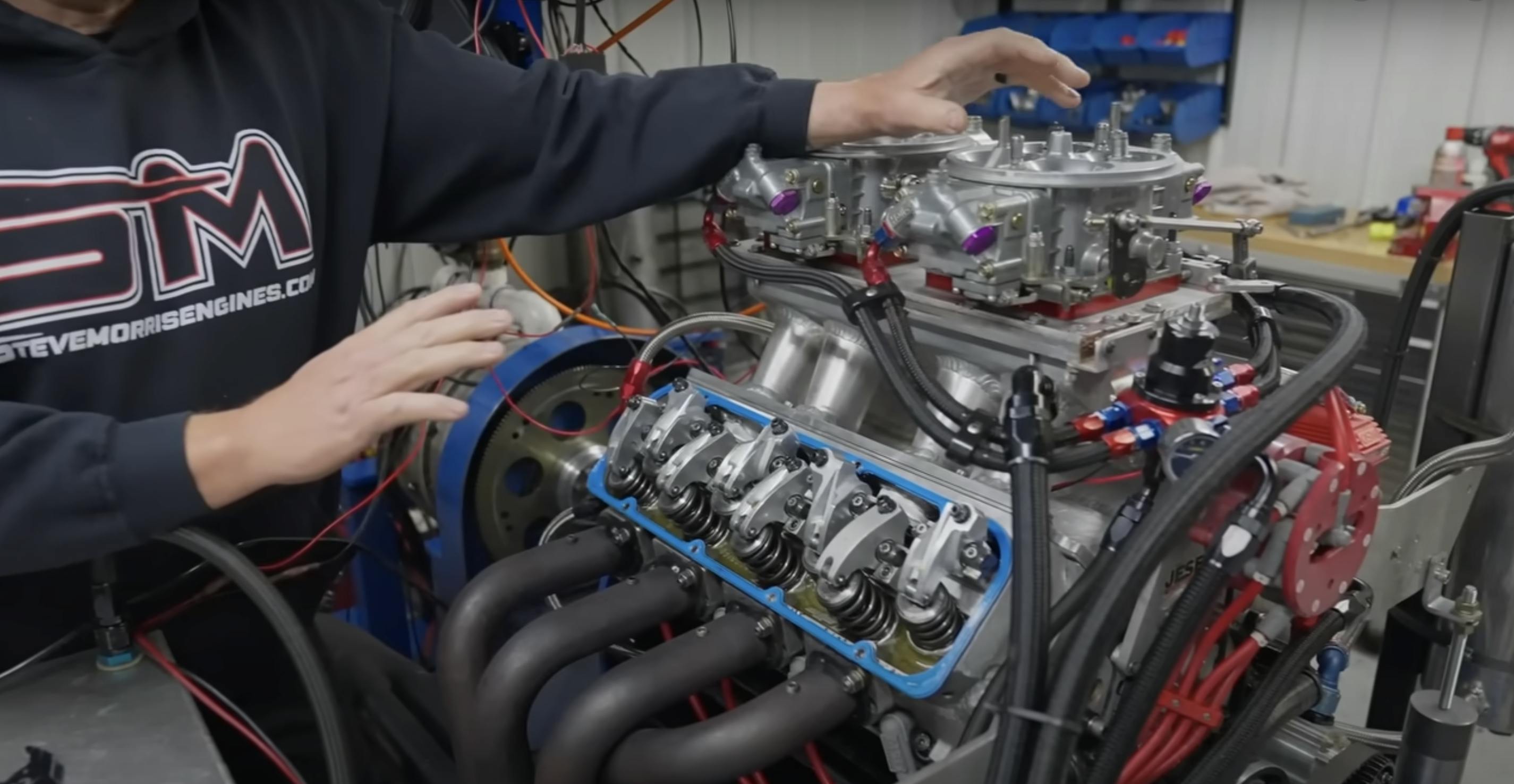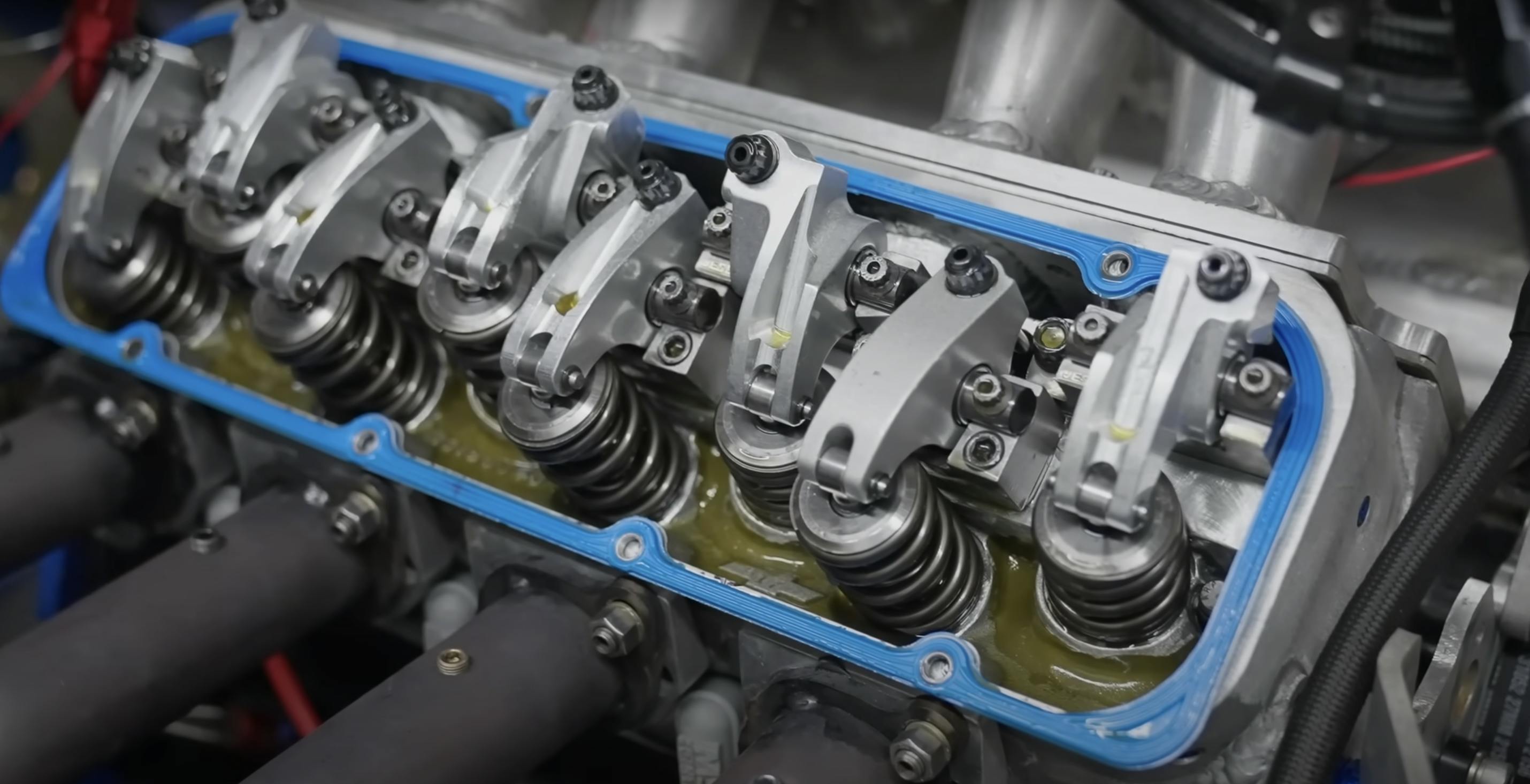Media | Articles
Can You Diagnose this Struggling Pro-Stock Chevy Small-Block?
Whodunits are fun. About a quarter of the top-ranking global podcasts are true-crime-themed. Working to understand every twist and turn to solve the mystery gives people a rush. That’s the feeling gearheads chase when something isn’t working and they want to track down the cause. The engines under our hoods are comprised of myriad parts and systems that, when all operating as designed, create a harmonious symphony of power, heat, and exhaust. When something is wrong, it can be a frustrating experience learning just how much more intricate an engine can be than simple “does it have fuel, air, and spark?”
The latest diagnostics tale I’ve been following is that of high-performance engine builder Steve Morris and the small-block Chevrolet V-8 that got bolted up to his dynamometer. The engine is in its second life now; it first served as an NHRA Pro Stock Truck powerplant when the NHRA had such a class nearly 30 years ago. It wears heavily modified Chevrolet casting, which is unique compared with many high-horsepower applications these days that utilize aftermarket and improved castings or, simply, blank-slate billet engine blocks and cylinder heads.
That NHRA class, full of Chevrolet S10- and Ford Ranger-bodied vehicles, is long faded from it’s short-lived popularity. But that didn’t mean this engine was relegated to a shelf or scrap metal pile. Instead, it now lives inside a mini-mod pulling tractor that is designed to move a weighted sled as far and as fast as possible on dirt. It’s a very different use case for the engine, and that created problems. As we learn in Morris’ YouTube video, the first issue was recently solved, but another popped up and it’s a stumper. On the bright side, it’s an interesting reason to learn something.
The initial problem: The engine would destroy the thrust bearing on the crankshaft after only a few runs down the dirt track. Turns out, the amount of clutch usage and pressure plate force over the duration of a tractor pull run is significantly different compared with the rapid-fire hits of shifting down a drag strip. The solution was a roller-style thrust bearing, and to be sure the fix was going to work, Morris hung the engine on the dyno to give it final checks.
After the first loaded pull, the engine exhibited a slightly higher idle than before. After the second pull, the idle reset again to another couple hundred rpm higher. Even after the team dialed in the idle air screws and reset the idle on the carbs, the engine continued to high-idle after a dyno pull. It even coughed a bit of smoke on startup after sitting between pulls. No vacuum leaks could be found.
Marketplace
Buy and sell classics with confidence
Later in the video, Morris seems to have some ideas as to the cause of the high idle, but he doesn’t let on much. Can we at-home players suss out the problem?
My personal theory is that the problem is related to ignition timing. The short clip of a dyno pull at the start of the video shows that this engine is using the front-mounted distributor for arcing the plugs. While it’s extremely unlikely to be running a points plate, there could be some form of mechanical advance inside that is hanging up as the engine slows down after a dyno pull. Or the pick-up and sensor are moving due to vibration thus causing a slight timing change.
I am also totally aware that my theories could be 100 percent wrong. Is the fact that Morris has the valve cover off in the video a tell or a well-placed red herring?
Morris closes the video with a promise that he will post a video within a couple of days, revealing the answer. These kinds of diagnostic discussions are just plain fun for some gearheads. If you have a solid guess, leave a comment below. I promise not to edit the story when you prove how wrong I am!
***
Check out the Hagerty Media homepage so you don’t miss a single story, or better yet, bookmark it. To get our best stories delivered right to your inbox, subscribe to our newsletters.








One or both of the holley units on top has an issue.
Vacuum leak, somewhere.
As soon as I saw the picture I noticed a different rocker arm. I’d start with putting the same rocker arm on every valve. The intake rocker arm on no. 2 is different than all the other ones. Not saying it’s the problem, but I don’t like to mix and match parts like that.
Leaning towards a seized/broken valve guide. Crankcase pressure is high enough to add air below the carbs, and the smoke is a dead giveaway. We experienced a 427 Chevy that ran great at the strip but idled at 1400 RPM no matter what was done to the idle control screw (Hilborn injection.) Teardown revealed the number 6 intake guide was completely missing but the Isky triple springs would always pull the valve back into place.
Valve stem seals would explain the smoke when started, as they are 25 years old causing vacuum leak.
Loose screw running around in the distributer…
I would say a carb problem. Had my tri-power rebuilt and couldn’t get it to run right. After many tries I rebuilt myself and they have worked great since.
Rear passenger side valve guide or push rod damage or valve stretch due to oil starvation (discoloured rocker arm). Intake valve no longer seats properly. Therefore erratic idling.
Check distributor, it maybe wrong type for that engine. I had that problem with my LT1 in my 68 Camaro that was blue printed to spec. Bore was a tad different with my older Corvette dual point distributor. It would appear dead on, was set up on a Sun machine, Weights, Springs were dead on.. turned out the bore size on the aluminum intake manifold was bigger.. manifold was ported to match the ported heads.. so search for a newer distributor… or maching a brass ring to correct miss match.. in over size manifold.. pressed brass on shaft.. redid timming.. problem gone..
Pull the heads, after you check the ignition system and distributor drive (on a scope, look for scatter, can be done with a timing light). Tractor pulls are hard on motors- marine engines also; run at peak torque for long runs. After all it only takes a Chevy a few seconds to outrun a 5.0. Since the crank was set up with a roller thrust bearing the short block is probably OK, so I think the problem (leak) is in the decks, heads (cracks) or guides. More clues from the dyno pulls would help (loss of power at low/mid RPM, erratic torque curve, AFR off etc)
If heads have been ported, possibly to the point that intake walls are thin. With porosity of aluminum it could pull air and oil thru the wall.
The air gap on the crank triggered sensor changed after installation of the roller thrust bearing and caused the ignition timing to be in an advanced state after a dyno pull.
vacuum leak caused by crank pressure.
The rising idle and puff of smoke on the restart me it could be a badly worn, or perhaps broken, valve guide.
I’m going with the odd roller rocker on cylinder #2 exhaust side. Also has no oil channel to the roller.
How would that affect idle after a dyno run?